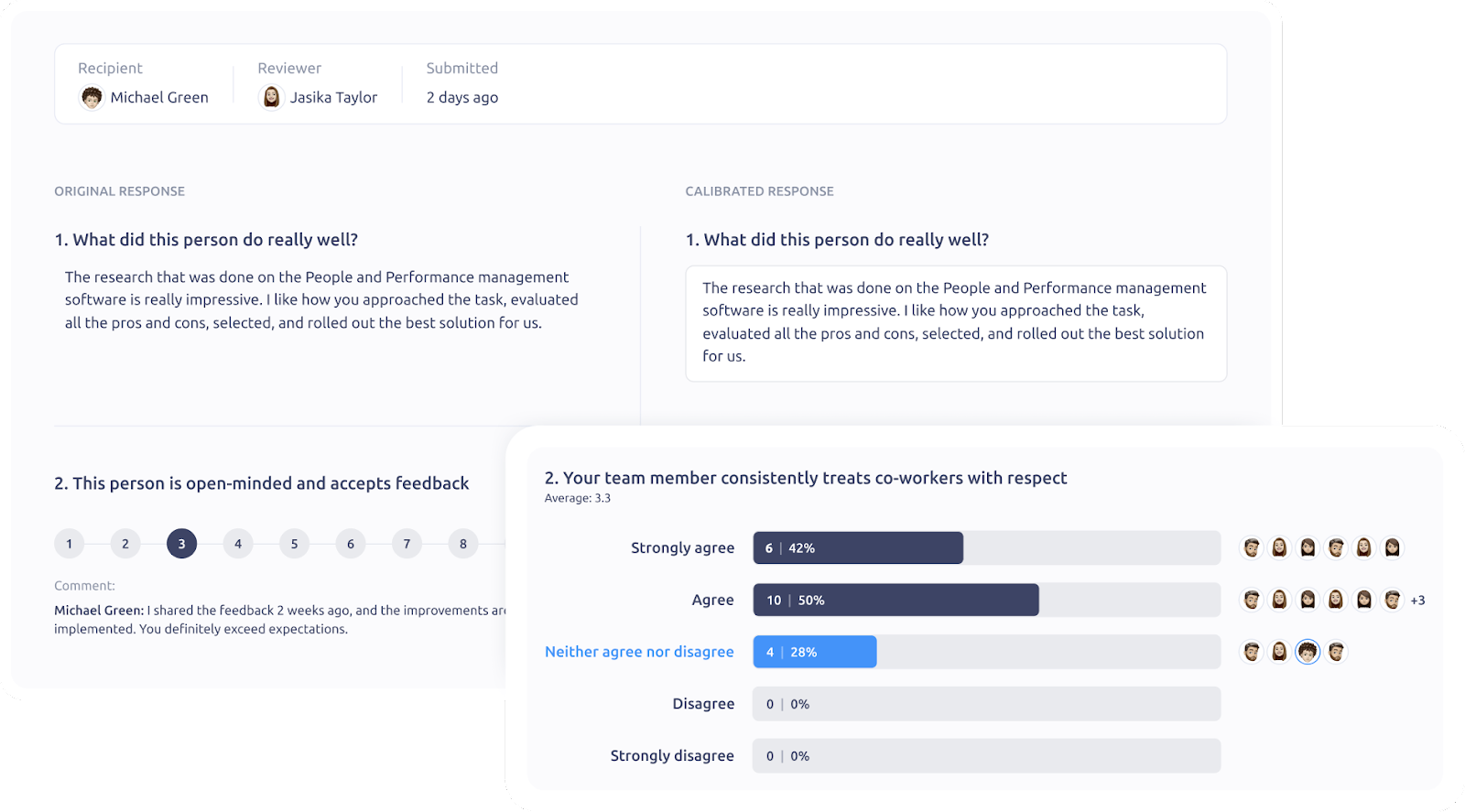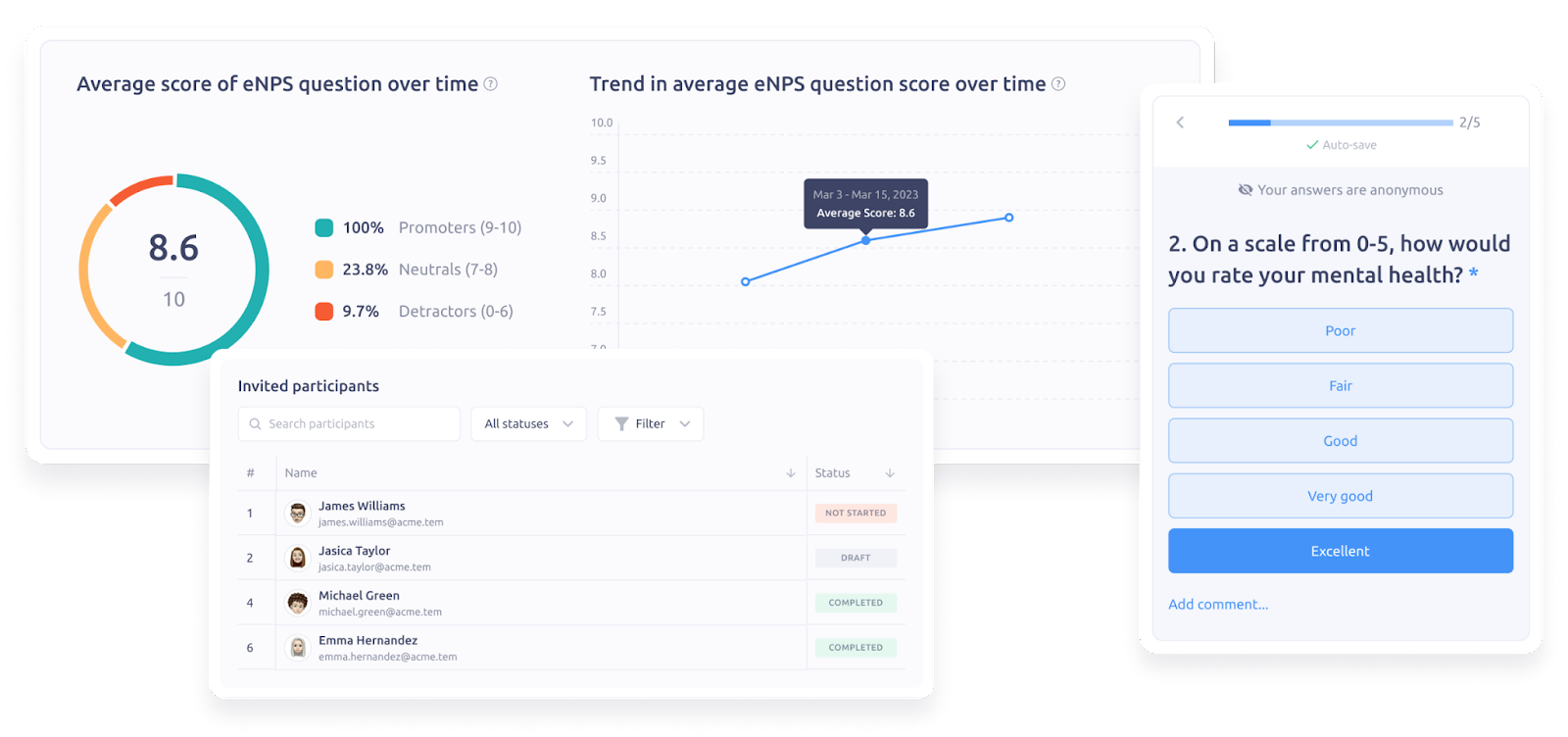
Your team's success is more than a metric—it drives your organization's victory. So, it’s essential to prioritize their optimal performance. A 2022 study in North America revealed that 93% of organizations emphasized performance management can improve organizational growth and productivity, yet only 44% saw their current performance management software successfully achieve that goal. Notably, performance rating scales have emerged as a vital tool for organizations evaluating employee performance, promoting growth, and adding to a company's culture.
But how do you choose the right metrics that reflect your company's goals and values? In this article, we'll dive into performance review rating scales, explore their significance, and unveil the secret to effective performance management using the Plai platform.
The performance review systems can effectively differentiate high-performing employees from low-performing employees. These scales provide a structured framework for quantitative assessments and delivering feedback, enabling organizations to make data-informed decisions and align individual efforts with the broader organization's culture.
With the right performance review scales, businesses can ensure that employees
Companies must consider the goals and objectives of different employees when designing a top-notch performance review rating scale. It ensures the elimination of common biases and offers a fair performance review.
Spread refers to the range of possible ratings on a performance scale. Organizations should ensure the spread is wide enough to capture subtle nuances to check the performance differences systematically.
Validity focuses on the accuracy of point scale data in relation to the questions asked. Your measurement tool must reflect your organization's objectives for the collected data to translate into meaningful outcomes.
Your rating systems should align closely with your company values and goals. If innovation and collaboration are your priorities, include metrics in the rating system that evaluate teamwork, interpersonal skills, communication skills, and creative problem-solving. This alignment ensures that employees' contributions are assessed within the context of what matters most to the organization.
Documenting performance reviews is crucial for maintaining an accurate record of an employee's past performance reviews and history. This documentation not only aids in decision-making processes such as promotions and raises but also helps identify patterns of improvement or areas that need further development.
A 3-point rating scale (e.g., Exceeds Expectations, Meets Expectations, Below Expectations) is famous for its clarity and ease of use. This rating system is particularly effective for measuring employee engagement and performance while reducing ambiguity.




Here's a comprehensive guide on how to communicate employee performance reviews effectively to maintain a motivated and engaged workforce:
Clearly articulate the rating level and its implications. Avoid jargon and complex language, ensuring that employees understand their performance assessment.
For example, If your performance is rated as 'Exceeds Expectations,’ it indicates that you consistently meet expectations to go beyond the set goals.
Offer specific examples and context to explain the same rating scale. This makes an employee aware of the basis of their evaluation and identifies improvement criteria.
For instance, you can mention achievements like “successfully completing a challenging project ahead of schedule” or “Leading a cross-functional team successfully meeting expectations.”
Encourage employees to share their thoughts, concerns, and reactions to performance ratings with management teams. When their opinions are valued, they become more receptive to constructive feedback and are more motivated to improve.
If an employee receives a rating that indicates room for improvement, provide them with resources to help them bridge the performance gaps-
Apply rating scales uniformly across the organization to avoid bad rating data, discrepancies, or inherent biases. Employees who observe consistent rating practices are likelier to trust the process and accept the outcomes.
Use the performance data as a launching pad for goal-setting. Collaborate with employees to establish actionable goals that align with their strengths and areas for improvement.

Plai is a transformative performance management system reshaping how organizations handle employee assessments and growth strategies.
Plai introduces a streamlined approach to the performance review process, making it effortlessly efficient. Through its user-friendly interface, the platform promotes
Plai's appraisal framework turns performance assessment into an engaging experience. The game-like approach keeps employees motivated and aligned with shared objectives, ultimately enhancing engagement and productivity.
Plai empowers employees to explore career paths within a transparent and safe environment. This inclusivity ensures that every voice is heard, contributing to a more diverse and dynamic workforce.
Plai's 360 Review assessment consolidates various aspects of employee performance in one convenient platform. This holistic approach, combined with the integration of Objectives and Key Results (OKRs), ensures a comprehensive and accurate assessment.
This HR performance software's user-centric UI/UX boosts adoption rates and simplifies the performance management process, making navigation and interaction effortless.
Plai's live chat feature offers real-time support with rapid response times. This ensures organizations can access the help they need whenever needed, enhancing the overall user experience.
The employee performance rating scale is irreplaceable in effective performance management. Organizations can create a high-performing culture where employees feel recognized, motivated, and empowered to reach their full potential by choosing the right metrics, communicating ratings effectively, and embracing cutting-edge platforms.
In this blog, we have shared different point scales available, what metrics to consider while choosing the correct performance review scale for your company, and how to effectively communicate performance reviews to employees to keep them engaged and motivated.
Plai empowers organizations with real-time feedback and support, 360-degree review, performance appraisal frameworks, and one-on-one training. It gives an accurate performance assessment and boosts employee engagement, eventually contributing to company goals and growth. To witness a change in your employee retention rate, request a demo today and explore Plai's versatile employee performance review system.
In this guide, you will find:
- OKR principles
- Formulas & scores
- OKR methodology
- Step-by-step guide
- Free OKR templates
- Common mistakes
Unlimited freemium for 14 days. Easy set up. No credit card required. 99% in customer satisfaction from G2 users.





Discover the top 8 team management tools to boost your team's productivity. Learn about their key features and functionalities.